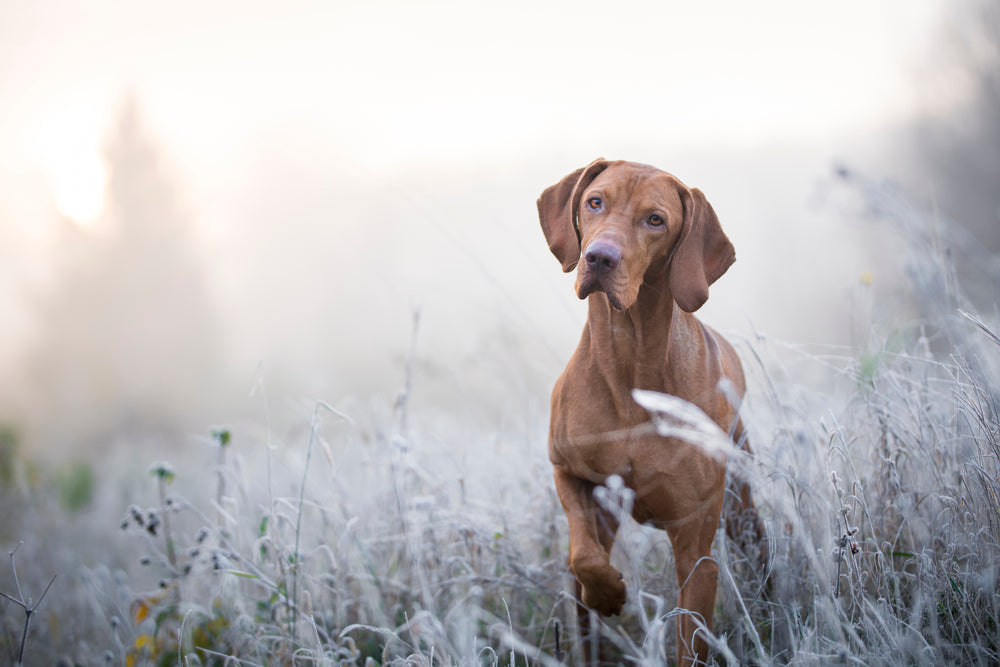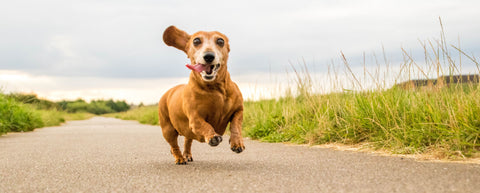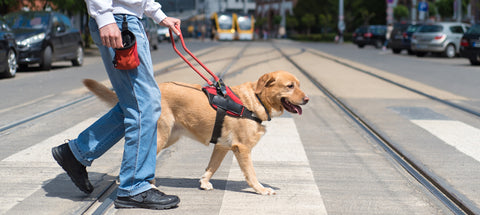As your dog gets older, they’re at greater risk of joint stiffness. This is caused by many different factors, such as trauma, wear and tear, or a previous surgery on the joint.
Unfortunately, joint stiffness can cause serious difficulties and even immobility. And what’s more, your dog’s joint problems can often be worse in winter.
Let’s take a closer look at how chilly weather affects canine joints, and how to keep your pup happy, healthy, and active during the colder months.
Why cold weather affects your dog’s joints
Our dogs get uncomfortable in the cold just like we do, and this could be for a few different reasons:
-
Changes to blood flow in cold weather. Blood flow to extremities such as the lower limbs can be restricted in cold weather, as the body tries to preserve blood flow to your dog’s vital organs, including the heart and lungs. This can lead to increased joint stiffness.
-
Tight muscles from the cold. Even dogs who normally don’t experience joint stiffness can end up with tense muscles in cold weather, especially after a period of inactivity. For dogs with existing stiffness, this can be more difficult to manage.
-
A lack of exercise due to staying indoors. The chilly weather may mean you take your dog for shorter walks – or no walks at all. But dogs need movement to stretch and warm up their muscles, and dogs with joint stiffness need exercise to maintain mobility.
Exercising your dog when it’s cold
Regular exercise is very important for keeping your dog mobile
One of the most important things for keeping your dog’s joints mobile, is to make sure they maintain regular movement and physical activity.
If your canine companion is dealing with stiff joints or tense muscles, they may not want to go for a walk at first. But a moderate stroll will help to warm up, stretch, and strengthen their muscles, and reduce the amount of stiffness they feel.
Dogs thrive on routine (and seasonal changes can be hard for them)
Dogs, by nature, love routines. They thrive when their walks, mealtimes, and the other day-to-day events in their lives are kept consistent.
If your dog was getting plenty of exercise in the warm, summer months, but ends up getting a lot less when it’s cold, this can lower their mood and overall wellbeing.
Try to keep your dog’s daily activity levels consistent. Aim for at least one walk per day. In fall and winter, it might be a good idea to go on a walk at midday rather than in the morning or evening, since it’ll be warmer.
What if there’s extreme weather?
If it’s pouring with rain outside, freezing, or if there are strong winds, keep your dog and yourself safe, and do some at-home exercises instead.
You could also look into indoor activities and classes for dogs that might be available, such as hydrotherapy. It turns out that swimming is one of the absolute best exercises for joint health, in dogs and in humans. It’s low impact, works many different muscle groups, and stimulates blood flow.
Other ways to battle the cold
No dog is likely to enjoy feeling cold, and senior canines in particular might have a tough time in the winter chill, especially when they first wake up on those frosty mornings.
Here are a few suggestions for helping them battle the cold.
1. Get cozy
One of the best ways of warming up your pup when it’s cold out, is to make sure they’ve got enough cozy accessories for the season.
Blankets, dog jerseys, a warm bed, and even fluffy toys can all help to keep your number one canine pal toasty no matter the weather. And other accessories like waterproof jackets can help make sure they’re comfortable when it’s time for a walk.
It’s also a good idea to find a warm part of the house for your dog’s bed. Maybe near a radiator or a covered fireplace, for example.
Keep in mind that smaller breeds and older dogs are more likely to feel the chill, so give them some extra attention, and make sure to warm them up properly when they get home from a walk.
2. Let them rest
Your dog probably won’t feel like being super active when it’s cold, especially if the cold is making their joints feel stiffer. So, even though it’s important to keep their walks going, it’s also important to give them enough time to rest.
Just make sure they’re comfortable, with an ergonomic bed to lie down in. We recommend choosing one that’s specially designed to support stiff joints, and that’s big enough for your dog to stretch out on.
To make sure they always have a warm and cozy place to retreat to during fall and winter, it might also be a good idea to leave a few dog beds spread around different areas of your home, so your canine companion never has far to travel before being snug as a bug.
If joint stiffness is making it difficult for your dog to get into their bed, it may be worth considering some extra accessibility features, like a dog ramp, as well as making sure they don’t have to climb any stairs to get to their bed.
3. Give them some extra love
Pampering your dog when it’s cold outside can do plenty of good, both when it comes to helping them physically feel their best, and also when it comes to keeping their spirits high and their tails wagging.
Why not try out an at-home dog physiotherapy session, with some gentle exercises to increase blood flow to the joints. Gently massaging any problem areas – like knees, hips, or joints – may help to loosen stiff muscles. Remember to go gently and seek advice from a professional about the most suitable exercises for your dog.
4. Keep them trim
As the weather gets colder, and people and their pets get less active, it’s not unusual for them to end up putting on a few pounds – especially around the holiday season when there’s extra food everywhere.
But did you know that overweight dogs are significantly more likely to experience joint stiffness, as well as inflammation?
Monitor your dog’s weight during the colder months in particular, and manage their portion sizes if they start putting on weight. If in doubt, consult with your veterinarian and they can advise you on the best ways to manage your dog’s weight.
If you’re unsure on how to stop your dog from packing on the pounds over winter, reach out to your vet. They’d be happy to help!
5. Try a supplement
If your dog isn’t already taking joint supplements, winter might be the perfect time to start.
A high-quality supplement like YuMOVE can help support joint health and aid mobility throughout your pet’s life. Our range contains something for dogs at every stage of life, from YuMOVE Young & Active for energetic younger dogs, to our extra-strength YuMOVE Joint Care PLUS, for both more active and older dogs, who need extra support.
Are you looking for some extra ways to help your dog have a great festive season? If so, check out our blog Holiday baking for your dog!










